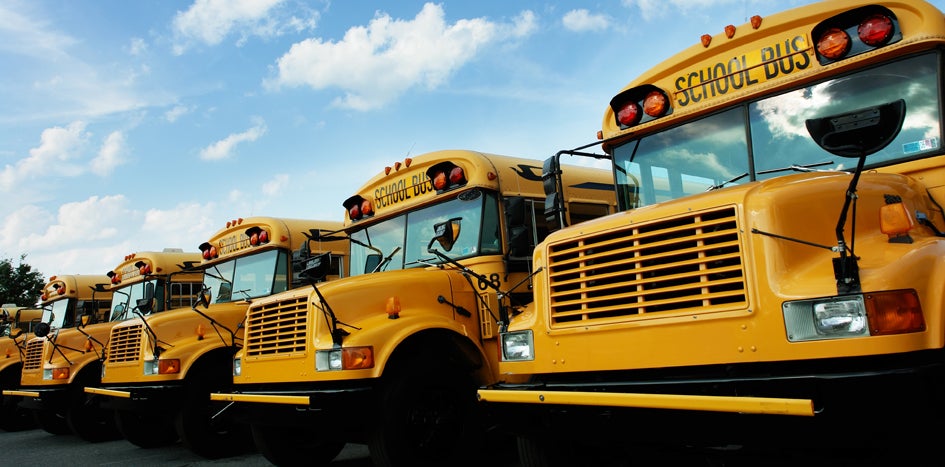Protect Your Fleet With a Preventative Maintenance Plan
When was the last time one of your buses got an oil change? If you can easily answer that question, then you might think you’ve already taken care of your regular maintenance. But in reality, you’re just getting started. A true auto preventative maintenance (PM) program at your school should be so much more – it involves regularly caring for every aspect of every vehicle while following a consistent schedule and documenting every service.
A full-fledged PM plan is a key facet of any fleet management program. By proactively taking care of your vehicles before serious problems arise, you can keep your passengers and cargo safe while avoiding costly damages. A few dollars in servicing today could save you thousands in repairs and claims costs down the road, so make sure you know how to assemble an actionable plan that works for your organization.
Preventative maintenance and peace of mind
An effective PM program can have wide-ranging positive impacts on your school or community college. It makes it easy to gather objective data: With a glance at your PM records, you can see much you’ve spent on repairs, what parts you’ve used, how many accidents have occurred, and what caused the most incidents, among many other data points. This information can help you balance your budget, manage expenses, and make educated decisions in the future. That’s not to mention that consistent maintenance can improve your organization’s safety program by ensuring that every vehicle is always running at its best.
Following a PM program can cut costs in other areas, too. Many auto insurance carriers won’t cover damages caused by simple wear and tear, which could saddle you with major expenses if your vehicle breaks down after extensive use. Most vehicle warranties will have the same exclusions, so it’s important to realize that proactively maintaining your vehicles can prevent costly claims from arising in the first place.
How do you assemble a PM program?
The most effective PM plans are built on accountability and consistency. Be sure to cover all the bases when developing your program:
Follow your manuals
The first step to implementing a PM program is to gather your manuals and stick to them. Each of your vehicles should have a manufacturer’s manual, which outlines basic maintenance requirements meant to keep each vehicle in the best possible condition for the long run. Your truck’s manual might recommend you get an oil change every 5,000 miles or that you check your fluid levels every 10,000, for example. You can start your program by scheduling work orders according to the calendar laid out by your manufacturers.
Get your records in order
After building a solid foundation with your owner’s manuals, keeping a consistent and up-to-date record of vehicle maintenance is the most important part of any PM program. Everything should be recorded either digitally or on paper – be sure to document every service you perform, including information such as who was on the job and what components were used. You should also keep track of info like parts purchase receipts and insurance claim forms. All your records should be organized and easy to access, with an appointed individual responsible for maintaining them.
Tailor your schedule to your needs
Keep in mind that following the recommendations in your manuals is only the beginning of responsible maintenance. Your program should be organic and tailored to the needs of your fleet. While manufacturer manuals tend to take a one-size-fits-all approach, your school is a unique organization that can have unique needs. Your buses might experience heavy use in the spring and fall while lying dormant through the summer, for instance, so you may need to adjust your servicing schedule to accommodate your situation.
You should also consider your organization’s projected growth, as well as the age of your vehicles. If your fleet is filled with decades-old trucks and buses, your maintenance schedule may need to include more frequent services. Meanwhile, if your organization is growing rapidly, your plan should be flexible enough to accommodate your projected expansion.
Understand your limits
Don’t give yourself more work than you can realistically handle. You should honestly assess what your in-house transportation team can and can’t manage. Are you giving your vehicles sufficient attention, or are you ignoring important problems simply because you don’t possess the knowledge or resources to address them? If your staff doesn’t have sufficient education to maintain your fleet, you should consider encouraging them to enroll in training programs or academies so they can grow their knowledge and develop their abilities.
Conversely, outsourcing your maintenance is another viable option. You could choose to take your vehicles to local repair shops, or you may even be able to take advantage of mobile maintenance services. This latter option is a great choice for smaller or rural organizations that can’t afford to leave their vehicles sitting in repair shops for days on end; instead, mobile maintenance allows mechanics to come to your property and perform their repairs onsite, so your vehicle will be ready to go once they're done.
If you do opt for third-party help, make sure that you and your repair partners are on the same page from the beginning. You should ask them to follow your established PM plan, or at the very least, they should explain the maintenance plan that they intend to follow. PM should be part of your written contract so that all expectations are set appropriately.
Know what to look for
While each vehicle will have unique needs, there are a few things that you should always monitor throughout your fleet. Whether you’re operating a brand-new bus or a decades-old truck, you’ll need to ensure your fluid levels are sufficient, your windshield wipers are functional, and your tires have enough pressure. If you don’t know where to start, we’ve assembled a free Auto Preventative Maintenance Checklist to help you and your transportation team assess what you need to do.
Of course, some vehicles will need service in-between scheduled maintenance. Your policies should require drivers to proactively report mechanical issues and explain how to notify their supervisor, the transportation team, or another designated employee.
Leverage the latest technology
Technological innovations are changing how vehicles are maintained. Information that was once inaccessible can now be gathered thanks to the latest technologies. By using the right tools, you can monitor a driver’s performance, assess an engine’s operating temperature, detect mechanical irregularities, and ultimately prevent many accidents.
This tech might sound like the realm of fantasy, but it represents a fast-growing industry that is quickly spreading through school fleets across the country. Investing in new technology will require retraining your staff and potentially purchasing new equipment, but it’s nonetheless a worthwhile investment. It can add a new dimension to your maintenance and help you protect your vehicles and their passengers to an unprecedented degree.
Risk Solutions Staff
The TASB risk solutions team includes risk solutions consultants and communications professionals who deliver training, consultations, articles, and resources that help Fund members control losses and their associated costs.
You May Also Like…
View All Related Insights
The Basics of School Fleet Management
Your community relies on your district's vehicles, so take care of your buses, trucks, and cars with these fleet management basics.

Want to Worry Less About Data Breaches?
The accidental release of sensitive information can tarnish your organization’s reputation. Data loss prevention tools help ensure that when employees make mistakes, technology has your back.

Fund Coverage 101: Intro to Cybersecurity Claims
Cybercrime is big business, and schools are tempting targets. Fund Privacy and Information Security coverage pays for covered claims, including incident response when appropriate.

Breaking Down Entry Level Driver Training Requirements
Federal entry level driver training requirements apply to CDL holders, including bus drivers. Do these four things to help your schools comply.
